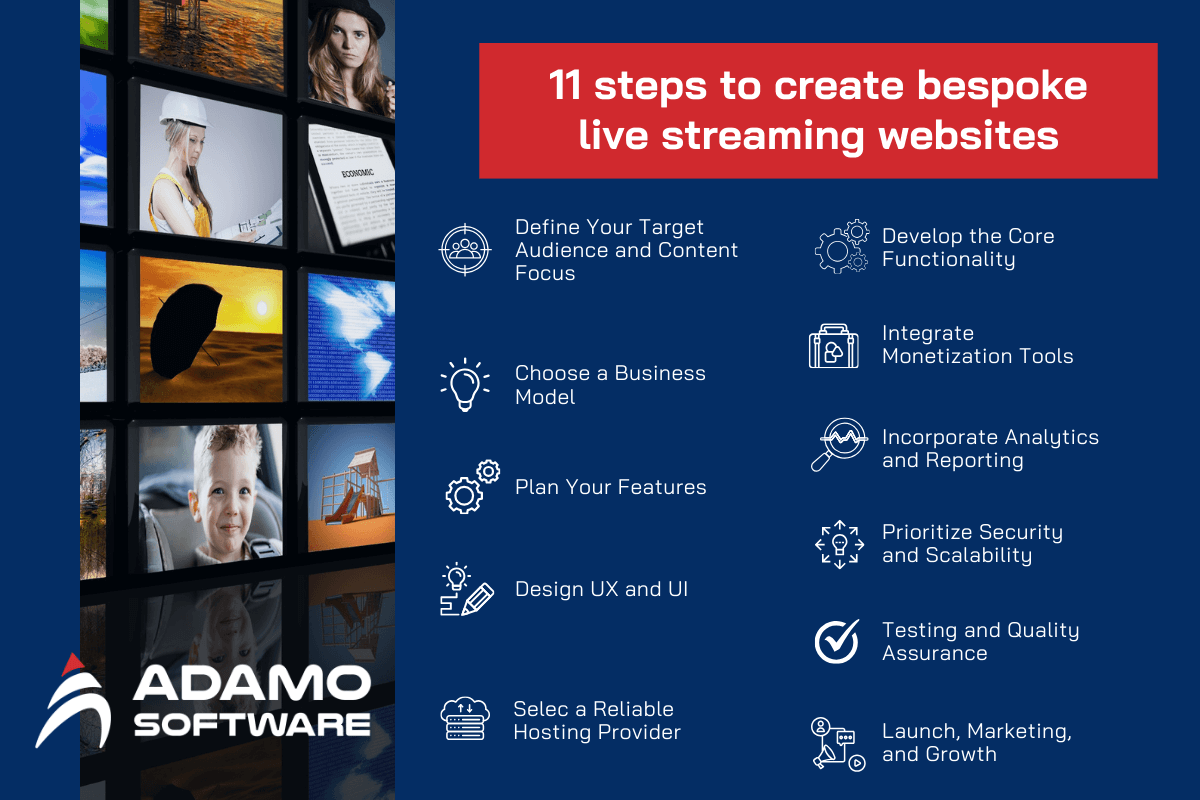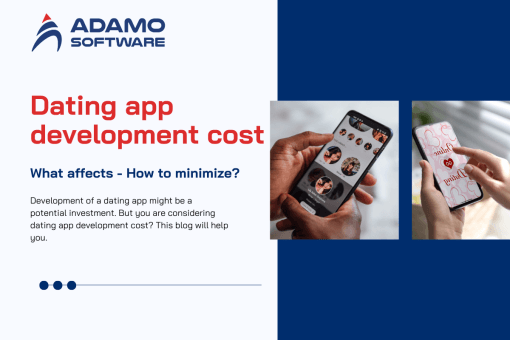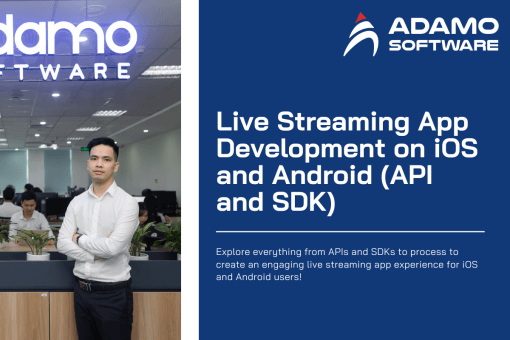11 Steps to Build Live Streaming Website with Features and Tech Stacks

Live streaming has exploded in popularity, transforming how we connect, learn, and entertain ourselves. From educational courses and captivating gameplay streams to live concerts and virtual events, live streaming websites have become a powerful tool for businesses and individuals alike. But if you’re considering building your own live streaming website, where do you even begin?
This comprehensive guide will equip you with the knowledge and resources to navigate the exciting world of live streaming website development. We’ll delve into the core functionalities, explore various types of streaming platforms, and outline the essential steps to build a bespoke website tailored to your specific needs. Additionally, we’ll explore the tech stacks powering these platforms and dive into the current market landscape to understand industry trends and user behavior.
I. What is the live streaming website? How it Works
A live streaming website allows for real-time broadcasting of video and audio content to a large audience over the internet. Unlike traditional video-on-demand platforms like YouTube, where content is pre-recorded and uploaded, live streaming offers an interactive and immersive experience. Viewers can access these live streams directly through web browsers on various devices, eliminating the need for downloads or specific software.
Here’s a breakdown of how live streaming websites work:
– Encoding: The broadcaster uses software or hardware called an encoder to capture their video and audio feed. This encoder compresses the raw data into a format suitable for real-time transmission over the internet.
– Streaming Server: The compressed video and audio stream is then uploaded to a specialized streaming server. This server is equipped to handle the high volume of data associated with real-time streaming and ensures smooth delivery to viewers.
– Content Delivery Network (CDN): For efficient distribution, the streaming server often leverages a Content Delivery Network (CDN). A CDN is a network of geographically dispersed servers that work together to deliver the live stream to viewers with minimal latency (delay). This ensures a smooth playback experience regardless of the viewer’s location.
– Player: Viewers access the live stream through an embedded player on the website. This player decodes the received data and displays the video and audio in real-time. Additionally, these players often include functionalities like chat, allowing viewers to interact with the broadcaster and other viewers during the stream.
In essence, live streaming websites act as a bridge between broadcasters and viewers, facilitating real-time communication and fostering a sense of community around shared interests.
II. Explore types of streaming websites
The world of live streaming is vast and caters to diverse audiences and content. Here’s a closer look at some common types of live streaming websites:

1. Entertainment Streaming
Platforms like Twitch, YouTube Live, and Mixer are the go-to destinations for gamers and content creators. These platforms focus on:
– Video game streaming: Live broadcasts of gameplay, walkthroughs, and esports competitions.
– Creative content: Vlogs, live music performances, comedy shows, and artistic demonstrations.
– Social entertainment: Casual streaming by individuals showcasing their talents, hobbies, or daily lives.
2. Educational Streaming
Platforms like Udemy Live, Coursera Live, and Vedantu enable real-time learning experiences. These platforms offer:
– Live courses and lectures: Instructors can conduct live sessions, interact with students in real-time, and answer questions.
– Webinars and workshops: Experts can share their knowledge and expertise on specific topics through live presentations and discussions.
– Online tutoring and coaching: Personalized learning experiences with real-time feedback and interaction between students and tutors.
3. Event Streaming
Platforms like Zoom, Vimeo Livestream, and Hopin cater to virtual events and conferences. These platforms enable:
– Live conferences and summits: Remote participation in presentations, workshops, and networking opportunities.
– Product launches and unveilings: Create excitement and engagement around new product releases with live presentations and demonstrations.
– Virtual auctions and fundraising events: Conduct auctions, accept bids, and interact with participants in real-time.
– Live streaming of concerts, performances, and religious services: Allow audiences to experience events remotely and participate virtually.
4. Social Streaming
Platforms like Instagram Live, Facebook Live, and TikTok Live leverage the power of social media for live interactions.
– Q&A sessions and AMAs (Ask Me Anything): Public figures, businesses, or influencers can connect with their audience in real-time.
– Product demonstrations and live shopping experiences: Showcase products, answer questions, and drive sales through interactive live streams.
– Behind-the-scenes glimpses and exclusive content: Offer viewers a sneak peek into daily operations, creative processes, or personal lives.
This is just a glimpse into the diverse landscape of live streaming websites. New platforms and functionalities are constantly emerging, catering to even more specific niches and interests.
III. List out live streaming features
Live streaming websites offer a unique blend of broadcast and interactivity. To create a successful platform, you’ll need features that cater to both broadcasters and viewers. Here are some important features to consider:
For Broadcasters
– High-Quality Streaming: Ensure smooth and reliable video and audio playback with minimal latency (delay) for a professional broadcast experience.
– Multiple Streaming Options: Allow broadcasters to stream from various sources with ease. This could include webcams, mobile devices, dedicated capture cards, or even pre-recorded content integration.
– Content Management System (CMS): Provide a user-friendly interface for broadcasters to manage their live streams.
This should include functionalities like:
– Scheduling broadcasts: Schedule upcoming live streams to generate anticipation among viewers.
– Stream management tools: Start, stop, and manage live streams with ease, including the ability to adjust settings and troubleshoot any technical issues.
– Content library management: Upload pre-recorded content, trailers, or intros to enhance the live stream experience.
For Viewers
– Live Chat: Facilitate real-time interaction between broadcasters and viewers. This allows viewers to ask questions, share comments, and participate in discussions during the live stream.
– Interactive Features: Consider incorporating additional interactive features to boost engagement, such as polls, quizzes, or live Q&A sessions.
– Multiple Device Compatibility: Ensure the live stream is accessible on various devices including desktops, laptops, tablets, and smartphones to cater to a wider audience.
– Social Sharing: Allow viewers to easily share the live stream with their social media networks, helping to expand the reach of the broadcaster’s content.
Monetization and Analytics
– Monetization Options: If your platform caters to paid content, integrate tools for subscriptions, pay-per-view streams, or virtual tipping to generate revenue for broadcasters.
– Analytics and Reporting: Provide broadcasters with insights into viewership data, such as the number of viewers, engagement metrics (likes, comments, shares), and audience demographics. This data allows broadcasters to understand their audience better and tailor their content accordingly.
Additional Considerations
– Security and Content Moderation: Implement robust security measures to protect user data and prevent unauthorized access. Additionally, have clear content moderation policies to ensure a safe and inclusive streaming environment for all.
– Content Discovery and Recommendations: For platforms with a large volume of broadcasters, consider features that help viewers discover relevant content based on their interests or past viewing habits.
– Accessibility Features: Make your platform accessible to a wider audience by incorporating features like closed captions, transcripts, or audio descriptions for viewers with disabilities.
By incorporating these features, you can create a live streaming website that fosters a thriving community, keeps viewers engaged, and empowers broadcasters to deliver exceptional live experiences.
IV. 11 steps to create bespoke live streaming websites
Building a live streaming website that stands out requires meticulous planning and execution. Here’s a proven roadmap to guide you through the essential steps so that you can monetize your live streaming website.

1. Define Your Target Audience and Content Focus
– Who are you trying to reach? Gamers, fitness enthusiasts, educators, or music lovers? Understanding your target audience is crucial for tailoring the platform’s features and functionalities to their needs and interests.
– What kind of content will be streamed? Live gameplay sessions, educational lectures, virtual concerts, or social interactions? Identifying the content focus helps determine the technical requirements and overall user experience.
2. Choose a Business Model
How will you generate revenue? Will it be a free platform supported by advertising? Will you offer subscriptions or pay-per-view options? Determining your revenue model upfront helps shape your platform’s functionalities and pricing strategy.
3. Plan Your Features
– Prioritize the functionalities that are essential for your target audience and content type.
– Don’t try to include everything at once. Start with a solid core of features and gradually add more based on user feedback and future needs.
4. Design a User-Friendly Interface (UI) and User Experience (UX)
– Create a visually appealing and intuitive interface that’s easy for both broadcasters and viewers to navigate.
– Focus on clear labeling, logical layout, and a seamless user experience across different devices.
5. Select a Reliable Hosting Provider
– Live streaming requires a robust hosting infrastructure to handle real-time traffic.
– Choose a provider with a proven track record of reliability, scalability, and the ability to handle peak loads during high-traffic events.
6. Develop the Core Functionality
This is where you build the backbone of your platform, including functionalities like:
– Live streaming capabilities: Encoding, transcoding, and delivery of live video and audio streams.
– Content management system (CMS): Tools for broadcasters to manage streams, schedule broadcasts, and upload content.
– User management: User registration, login, and profile management for both broadcasters and viewers.
– Live chat: Real-time interaction between broadcasters and viewers.
7. Integrate Monetization Tools (if applicable)
– If you’re planning on offering paid content, integrate secure payment gateways and subscription management systems.
– Ensure a smooth and user-friendly experience for viewers to purchase subscriptions, pay-per-view access, or send virtual tips to broadcasters.
8. Incorporate Analytics and Reporting
– Provide broadcasters with tools to track their stream performance and audience engagement.
– This includes metrics like the number of viewers, watch time, demographics, and chat activity. Insights from analytics allow broadcasters to refine their content strategy and improve the overall viewer experience.
9. Prioritize Security and Scalability
– Implement robust security measures to protect user data, prevent unauthorized access, and mitigate cyber threats.
– Ensure your platform can scale to accommodate a growing user base and increased traffic without compromising performance.
10. Testing and Quality Assurance
– Conduct thorough testing of all functionalities before launching your platform.
– This includes performance testing, security testing, and usability testing to ensure a smooth and bug-free user experience.
11. Launch, Marketing, and Growth
– Develop a marketing strategy to attract your target audience and promote your platform.
– Continuously gather user feedback, iterate on your features, and adapt to evolving trends in the live streaming landscape.
By following these steps and carefully considering the needs of your target audience, you can build a bespoke live streaming website that fosters a thriving online community and delivers exceptional experiences for both broadcasters and viewers.
Also read: Live Streaming App Development on iOS and Android (API and SDK)
V. Tech stacks to build a live streaming website
The tech stack you choose for your live streaming website will depend on several factors, including your budget, desired features, and scalability needs. Check out a breakdown of some common components:
1. Streaming Server
– Open Source Options: If you want a cost-effective solution, consider open-source streaming servers like Nginx-RTMP or Wowza Streaming Engine. These require more technical expertise to set up and manage.
– Cloud-Based Solutions: Cloud-based streaming services like Amazon Kinesis Video Streams, Microsoft Azure Media Services, or Google Cloud Video Streaming offer scalability and ease of use, but come with ongoing subscription costs.
2. Content Delivery Network (CDN)
Major cloud providers like Amazon CloudFront, Microsoft Azure CDN, and Google Cloud CDN offer robust and scalable CDN solutions to ensure smooth global delivery of your live streams.
3. Real-time Messaging and Chat
– WebSockets: This technology enables real-time, two-way communication between broadcasters and viewers during live streams. Popular WebSocket libraries include Socket.IO and Pusher.
– Cloud Messaging Services: Consider cloud-based messaging services like Firebase Cloud Messaging or Amazon Simple Notification Service (SNS) for real-time notifications and chat functionalities.
4. Programming Languages and Frameworks
– Front-end Development: Languages like HTML5, CSS3, and JavaScript are essential for building the user interface. Consider frameworks like React, Angular, or Vue.js for a more structured approach.
– Back-end Development: Languages like Python (with Django or Flask frameworks), Node.js (with Express.js framework), or Java (with Spring framework) are popular choices for building the server-side logic and APIs for your platform.
5. Additional Tools
– Video Encoders: Tools like FFmpeg or x264 are used to compress and encode video streams for efficient transmission over the internet.
– Content Management System (CMS): Consider a headless CMS like Contentful or Strapi to manage website content and user data efficiently.
For more details on CMS and MAM (Media asset management software), you can read here
– Security: Implement security measures like user authentication, data encryption, and regular security audits to protect user data and prevent cyber threats.
Remember, this is just a general overview. The specific tech stack you choose will depend on your unique project requirements
VI. Deep dive into the live streaming website market share, statistics and trends
The live streaming market is experiencing explosive growth, transforming how we consume content, connect with others, and even conduct business. To understand this dynamic landscape, let’s delve into some key statistics and trends:
Market Share and Revenue
– The global live streaming market was valued at $75.54 billion in 2023 [source needed], and is projected to reach a staggering $184.27 billion by 2027 [source needed]. This rapid growth indicates the increasing popularity and diverse applications of live streaming.
– While specific market share data for individual platforms is not readily available, major players include established names like Twitch, YouTube Live, and Facebook Live in the entertainment space, alongside educational platforms like Udemy Live and Coursera Live, and business-oriented solutions like Zoom and Vimeo Livestream.
Viewership and User Engagement
– A significant portion of the global population engages with live streams. Statistics suggest that over 40% of internet users have watched a live stream [source needed].
– The average live stream viewer spends over 100 minutes per session [source needed], highlighting the captivating nature of real-time content.
Driving Trends
– Mobile Domination: The rise of mobile internet access and user-friendly streaming apps has fueled mobile viewership. Platforms are optimizing features and interfaces for smartphones and tablets.
– Interactive Features: Viewers crave interactivity. Platforms are incorporating features like live chat, polls, quizzes, and virtual tipping to boost engagement and create a more immersive experience.
– Evolving Content Formats: Live streaming goes beyond entertainment. Educational courses, virtual events, live shopping experiences, and even fitness classes are gaining traction.
– Monetization Models: Platforms are exploring diverse monetization models beyond traditional advertising. This includes subscriptions, pay-per-view access, virtual tipping, and in-stream commerce.
– Social Commerce Integration: The lines between live streaming and social media are blurring. Platforms are enabling live shopping experiences where viewers can discover products and purchase them directly within the live stream.
Future Outlook
Live streaming is poised to continue its upward trajectory, becoming an even more integral part of our digital lives. As technology advances, expect even more innovative features, immersive experiences, and seamless integration with other online activities. Understanding these market trends and audience preferences will be crucial for businesses and content creators looking to leverage the power of live streaming.
VII. Why Select Adamo Software as a Reliable Live Streaming Website Development
While this guide has equipped you with the knowledge to navigate the world of live streaming website development, choosing the right development partner is essential for success. Here’s why Adamo Software can be your trusted partner in building your bespoke live streaming platform:
Expertise and Experience
– Adamo Software possesses a team of skilled and experienced developers with a proven track record in building high-performance live streaming websites.
– We understand the intricacies of real-time streaming technologies, video encoding, and CDN integration to ensure smooth and reliable live experiences.
Custom-Tailored Solutions
– We don’t believe in a one-size-fits-all approach. We work closely with you to understand your specific needs, target audience, and content focus.
– Our team will design and develop a platform that caters to your unique requirements and ensures a seamless user experience for both broadcasters and viewers.
Scalability and Future-Proofing
– We understand that your platform needs to grow alongside your user base. We build our solutions with scalability in mind, using robust technologies and architectures to accommodate increasing traffic and future feature additions.
Focus on Security and Performance
– Security is paramount. We implement industry-best practices to safeguard user data, prevent cyber threats, and ensure a safe and secure streaming environment.
– We prioritize platform performance and stability. Our team optimizes code and leverages efficient technologies to deliver smooth and lag-free live streams.
Dedicated Support and Maintenance
– We don’t just build your platform; we support you every step of the way. Our dedicated team will provide ongoing maintenance, address technical issues promptly, and be available to answer your questions.
Competitive Rates and Flexible Engagement Models
– We offer competitive rates and flexible engagement models to suit your budget and project requirements. Whether you need a full-fledged development team or ongoing maintenance support, we have a solution for you.
Ready to Discuss Your Live Streaming Vision?
If you’re looking to build a world-class live streaming website, we’d love to hear from you. Contact Adamo Software today to schedule a consultation and discuss your vision. Let’s turn your live streaming concept into a thriving online community.











